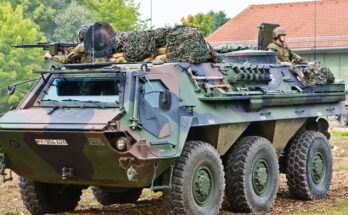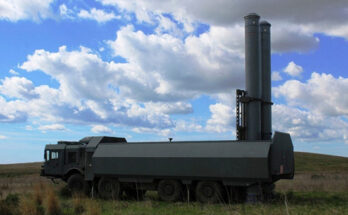
S-400 Surface-to-Air Missile System. Image – Vitaly V. Kuzmin [CC BY-SA 4.0]
Russia has maintained its arms exports portfolio despite pressure from external sources, Russian officials have said, and the volume of sales should rise in the future.
Speaking to Zvezda TV at the ARMY-2019 military exhibition, the head of the Federal Service for Military and Technical Cooperation, Dmitry Shugayev, said on Tuesday, “We all know well under which pressure Russia is, especially its defense industry. It is important to stress that our partners are also under very strong pressure and this is an example of unfair competition, as there are attempts to oust us from traditional markets and prevent us from entering new markets.”
Russia has said that its annual arms exports usually amount to around $15 billion. Commenting on the figure, Shugayev added, “Nevertheless, we are retaining this level of $15 billion and will be keeping it and increasing it, doing everything possible for that.”
Particularly following alleged Russian interference in the 2016 U.S. presidential election, Washington has sought to tighten the screws on Russia’s defense industry through sanctions, such as the Countering America’s Adversaries Through Sanctions Act, as well as diplomatic and political pressure on third-party countries that import Russian arms.
The most high-profile example of the U.S. pressure campaign is the ongoing spat between Washington and Ankara over the S-400, a Russian surface-to-air missile system that Turkey purchased and expects to begin receiving in July. The U.S. has warned Turkey that the buy will result in economic sanctions and also Turkey’s ejection from the F-35 fighter jet program. Washington is also warning India, another prospective S-400 buyer, against acquiring the system.
Besides pressuring foreign countries, the U.S. is also looking to incentivize the purchase of American-made weapons by offering financial assistance to countries that switch from importing from Russia to importing from the United States.
Shugayev emphasized that the measures have not deterred Russia. “The sanctions have failed to push through the main task of ousting Russia from the world arms market and they have also failed to make our partners turn away from us,” he said.
He noted that Russia “confidently hold[s] the second place” in weapons sales by countries. Rostec CEO Sergei Chemezov said that Russia currently occupies a share of around 20 percent of the world’s arms trade. While that figure can be difficult to verify, the international organization SIPRI recently identified Russia as having a share of about 21 percent, behind only the United States.
As part of its bid to boost arms sales, Russia is devising a new strategy of military-technical cooperation with foreign partners, Russian President Vladimir Putin said earlier this week. He noted, “With an eye to ensure the efficiency of our activities in the sphere of military technical cooperation with foreign countries, a draft strategy of military technical cooperation has been elaborated. It envisages coordinated measures of political-and-diplomatic, financial-and-economic and technical nature.”
President Putin added that the strategy should account for “new factors” that create challenges, such as “tougher competition and the aggressive use of unfair methods of political blackmailing and sanctions,” referring to the U.S. efforts to inhibit Russian arms sales.
Military markets analyst, covering Eurasia, Middle East, and Africa.




